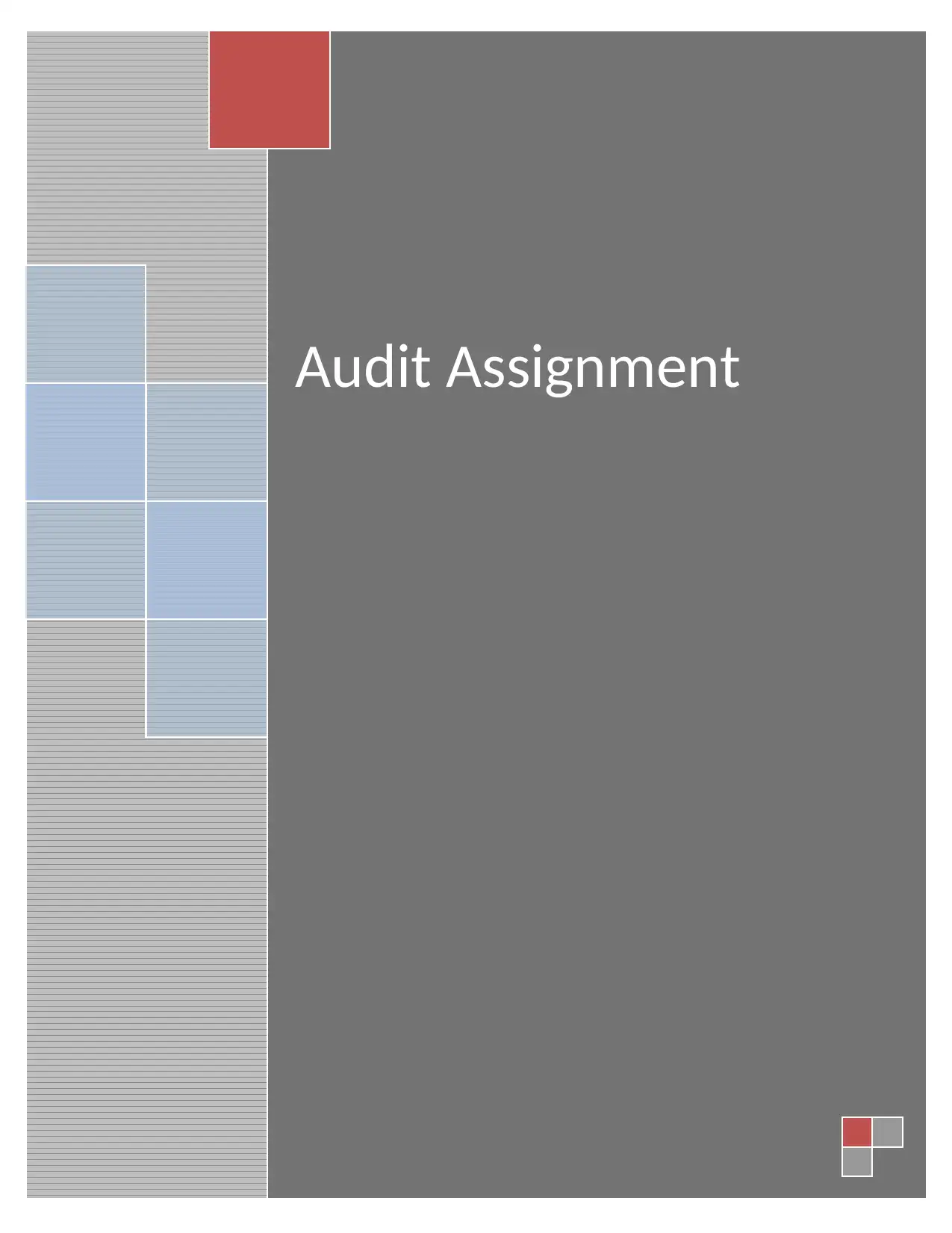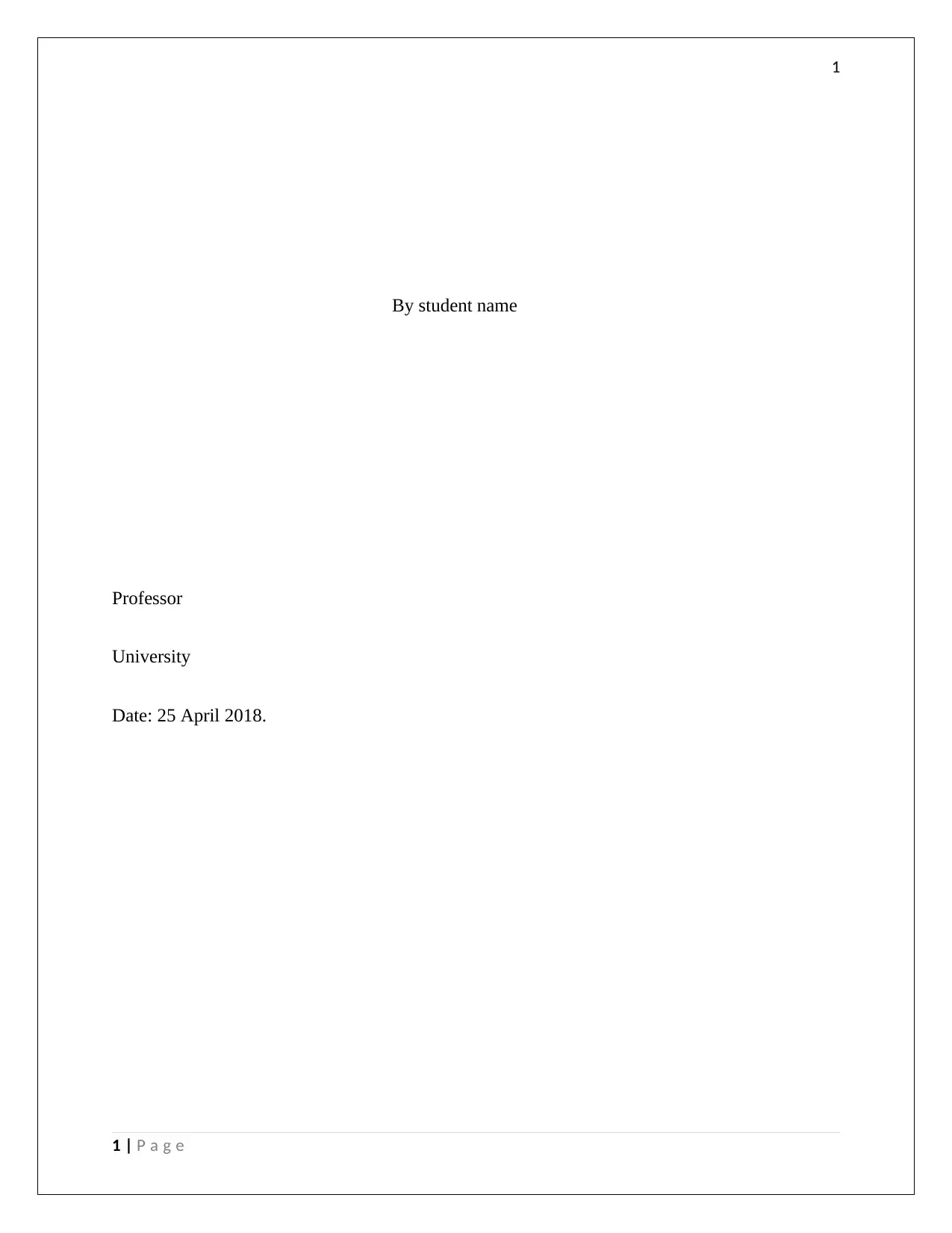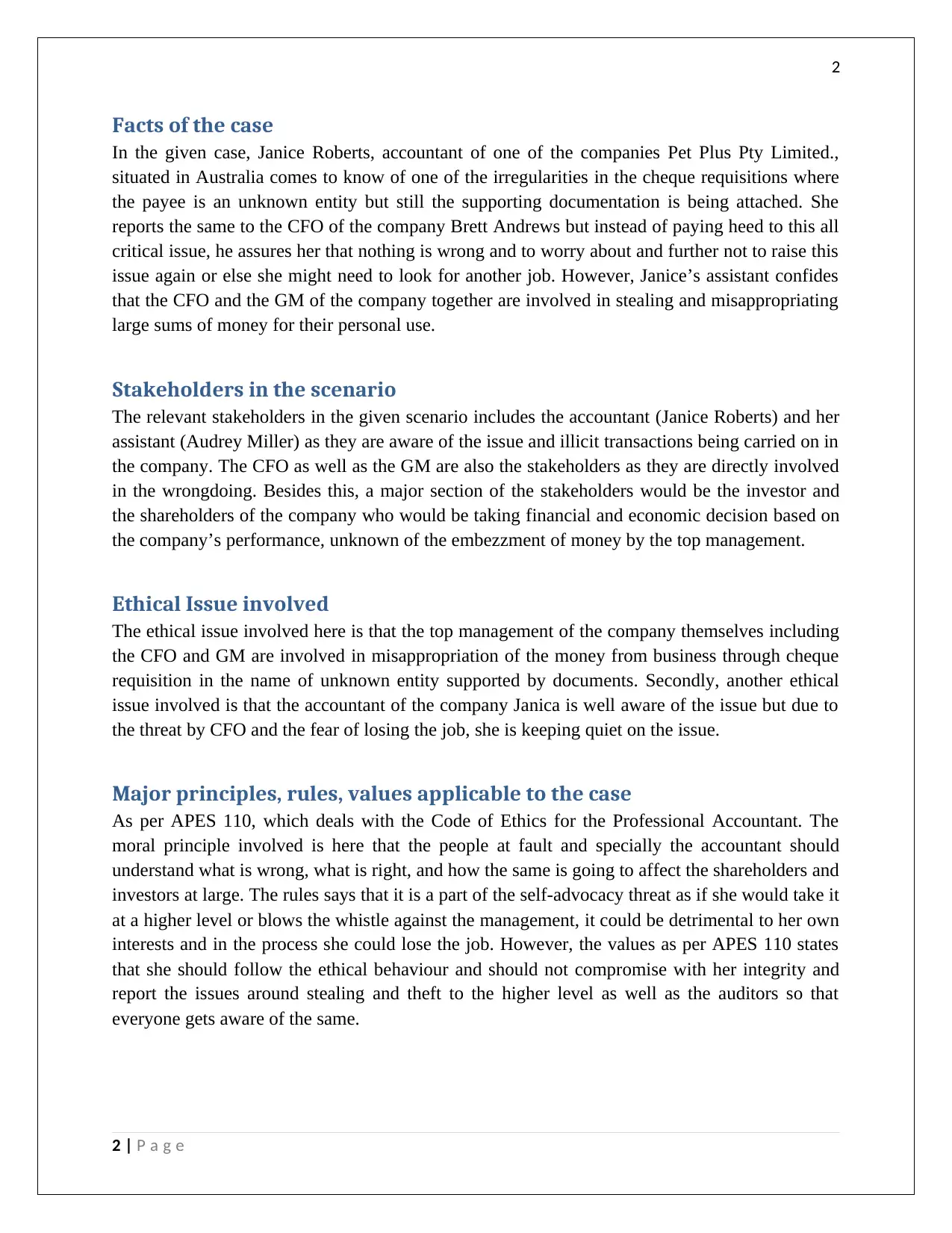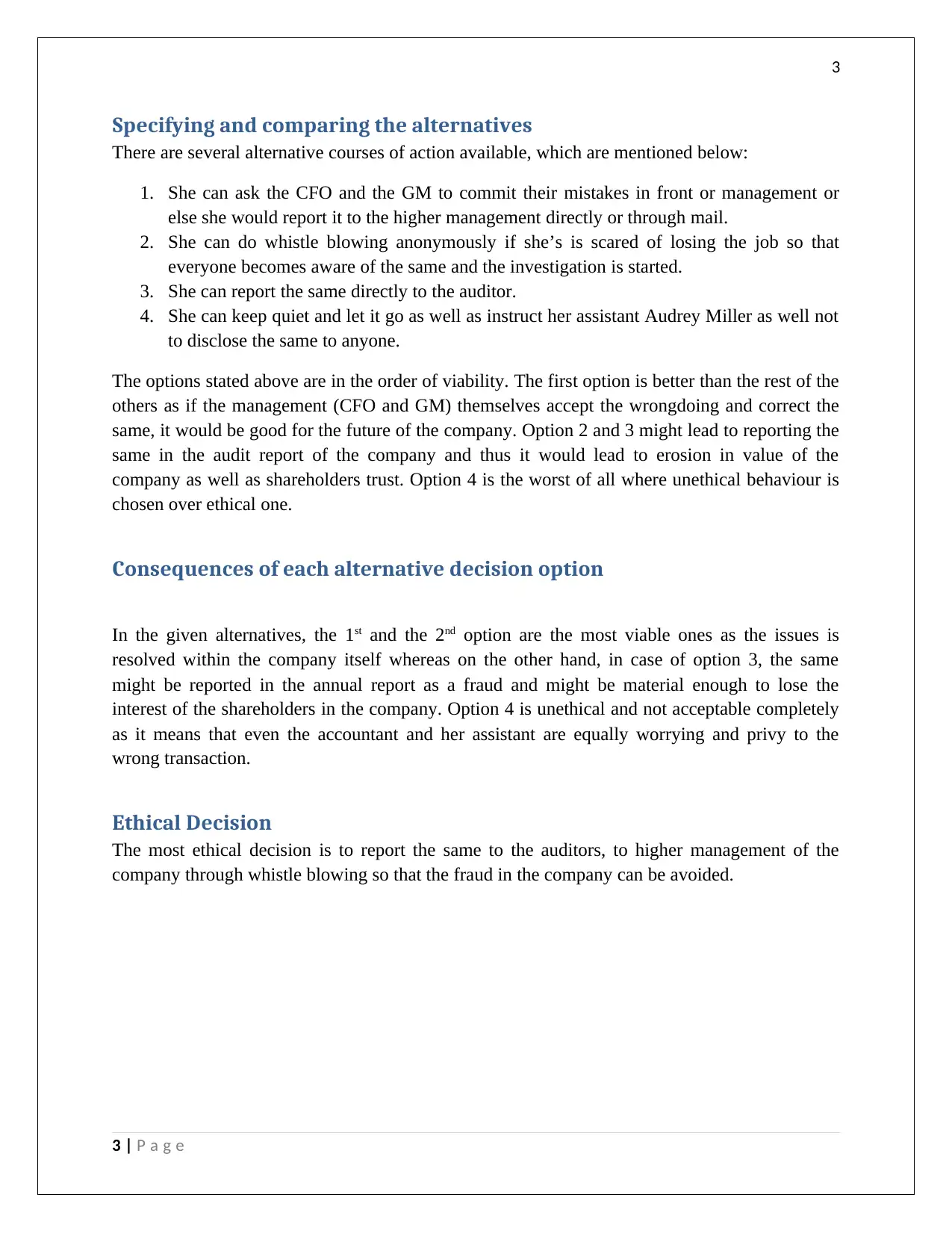Case Study: Ethical Issues in Audit - Pet Plus Pty Limited Analysis
VerifiedAdded on 2023/06/03
|4
|877
|293
Case Study
AI Summary
This audit assignment presents a case study involving Pet Plus Pty Limited, an Australian company, where the accountant, Janice Roberts, discovers irregularities in cheque requisitions. The CFO, Brett Andrews, dismisses her concerns, leading to an ethical dilemma as Roberts suspects the CFO and GM of misappropriating funds. The assignment explores the stakeholders involved, the ethical issues at play, and the applicable principles of APES 110. It then evaluates alternative courses of action, including confronting the management, whistleblowing, or reporting to auditors. The assignment concludes by recommending reporting the fraud to auditors or higher management to prevent further financial misconduct and uphold ethical standards. This case highlights the importance of ethical decision-making and the consequences of financial fraud within a company setting.
1 out of 4








![[object Object]](/_next/static/media/star-bottom.7253800d.svg)